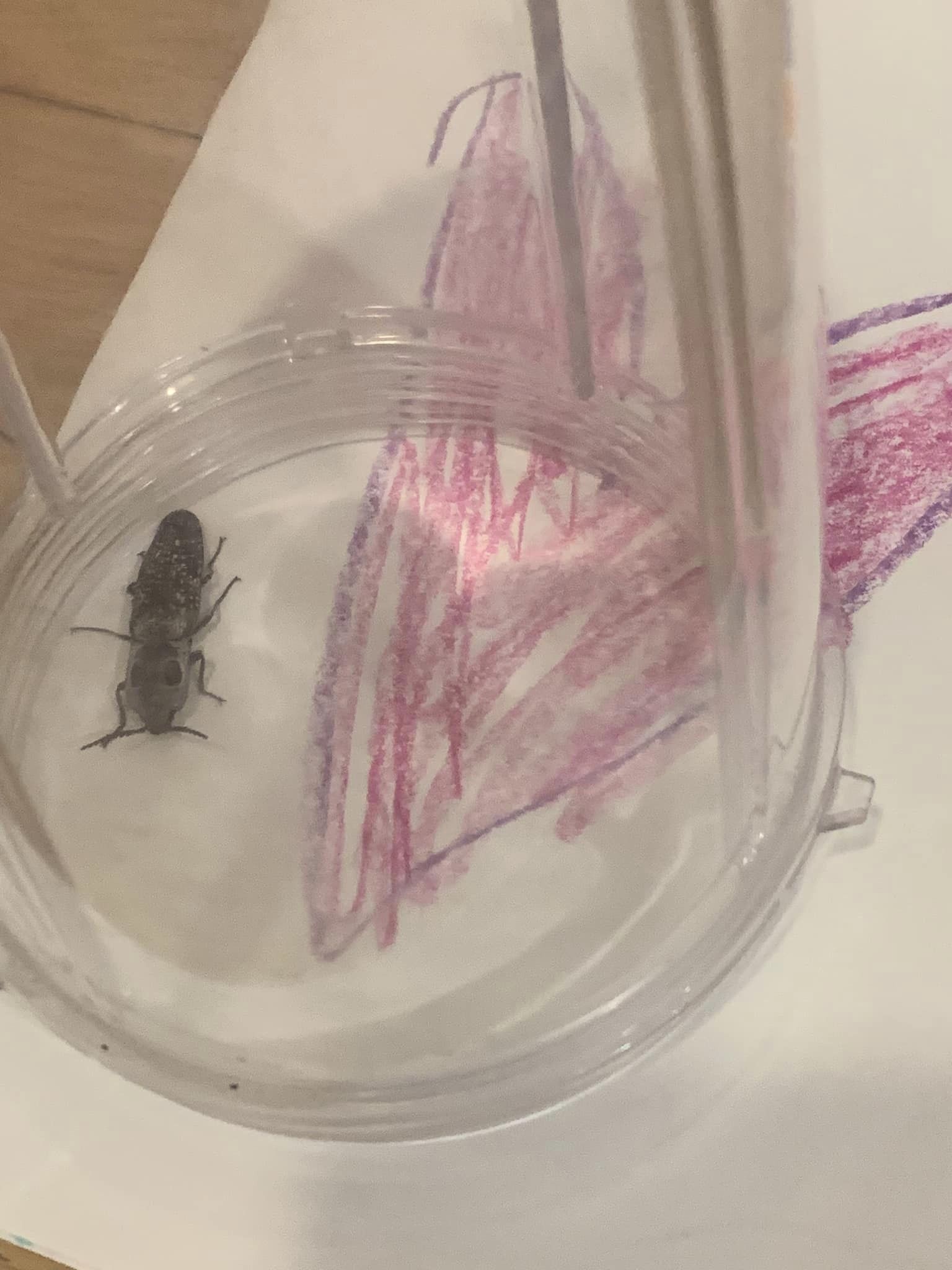Alaus Oculatus on:
[Wikipedia]
[Google]
[Amazon]
''Alaus oculatus'', commonly called the eastern eyed click beetle or eyed elater, is a 

species
A species () is often defined as the largest group of organisms in which any two individuals of the appropriate sexes or mating types can produce fertile offspring, typically by sexual reproduction. It is the basic unit of Taxonomy (biology), ...
of click beetle
Elateridae or click beetles (or "typical click beetles" to distinguish them from the related families Cerophytidae and Eucnemidae, which are also capable of clicking) are a family (biology), family of beetles. Other names include elaters, sna ...
.


Description
''Alaus oculatus'' can reach a length of about . They have an elongated body, black in color throughout. Thepronotum
The prothorax is the foremost of the three segments in the thorax of an insect, and bears the first pair of legs. Its principal sclerites (exoskeletal plates) are the pronotum (dorsal), the prosternum (ventral), and the propleuron (lateral) on e ...
exhibits a large oval patch of darker scales, framed in white, on each side - the common name of the beetle derives from this feature. The elytra
An elytron (; ; : elytra, ) is a modified, hardened forewing of beetles (Coleoptera), though a few of the true bugs (Hemiptera) such as the family Schizopteridae are extremely similar; in true bugs, the forewings are called hemelytra (sometime ...
are striated and mottled with silvery whitish scales. The depiction of a large pair of eyes on the pronotum is a defensive adaptation that has evolved because of its advantage in confusing or frightening potential predators. These “eyespots” are a form of self-mimicry, in which one part of the body has adapted to mimic another body part. Like all click beetles, ''A. oculatus'' is also capable of suddenly catapulting itself out of danger by releasing the energy stored by a click mechanism, which consists of a stout spine on the prosternum and a matching groove in the mesosternum.
Life cycle
Eggs are laid in soil or on standing deadwood. Many larvae from the click beetle familyElateridae
Elateridae or click beetles (or "typical click beetles" to distinguish them from the related families Cerophytidae and Eucnemidae, which are also capable of clicking) are a family of beetles. Other names include elaters, snapping beetles, sp ...
are commonly referred to as wireworms and are prominent agricultural pests that feast on plant matter. However, the larvae of ''Alaus oculatus'' are unique among wireworms because they are predatory to other beetle larvae feeding in decaying wood, especially Cerambycidae
The longhorn beetles (Cerambycidae), also known as long-horned or longicorns (whose larvae are often referred to as roundheaded borers), are a large family of beetles, with over 35,000 species described.
Most species are characterized by anten ...
. The larva pupate in rotting logs or below the ground and the adults emerge in the spring and are commonly found until September.
Diet
The adults do not eat much but their diet consists ofnectar
Nectar is a viscous, sugar-rich liquid produced by Plant, plants in glands called nectaries, either within the flowers with which it attracts pollination, pollinating animals, or by extrafloral nectaries, which provide a nutrient source to an ...
and plant juice. The larvae diet consists of grubs of wood-boring beetles. The larvae are voracious on wood borers, and during their development caged specimens were observed to devour more than 200 cerambycid
The longhorn beetles (Cerambycidae), also known as long-horned or longicorns (whose larvae are often referred to as roundheaded borers), are a large family of beetles, with over 35,000 species described.
Most species are characterized by anten ...
larvae each.Craighead FC. 1950. Insect Enemies of Eastern Forests. U.S. Department of Agriculture Miscellaneous Publication 657: 1- 679.
Distribution and habitat
This species is present in Central andNorth America
North America is a continent in the Northern Hemisphere, Northern and Western Hemisphere, Western hemispheres. North America is bordered to the north by the Arctic Ocean, to the east by the Atlantic Ocean, to the southeast by South Ameri ...
. It can be found in deciduous/mixed forests and woodlands.
References
External links
* Elateridae Beetles of North America Beetles described in 1758 Taxa named by Carl Linnaeus {{Elateridae-stub